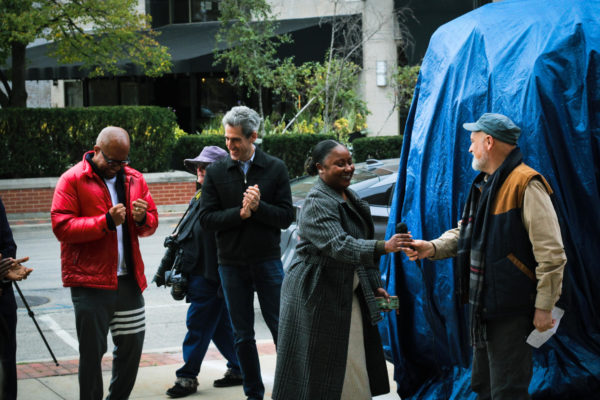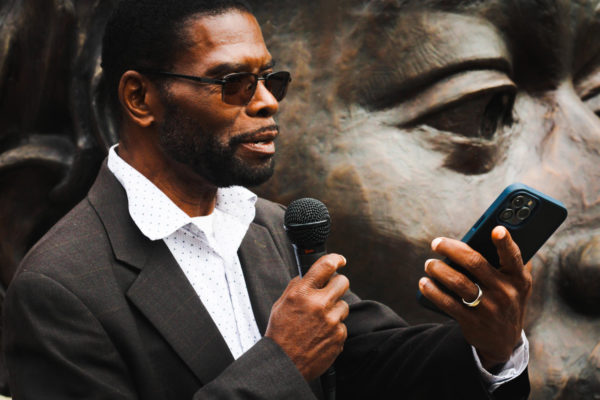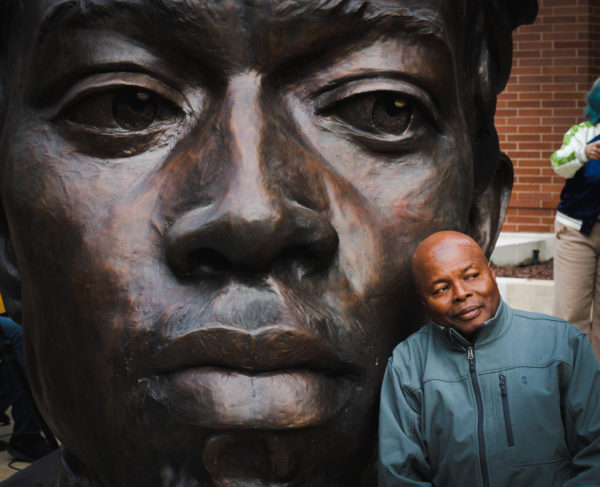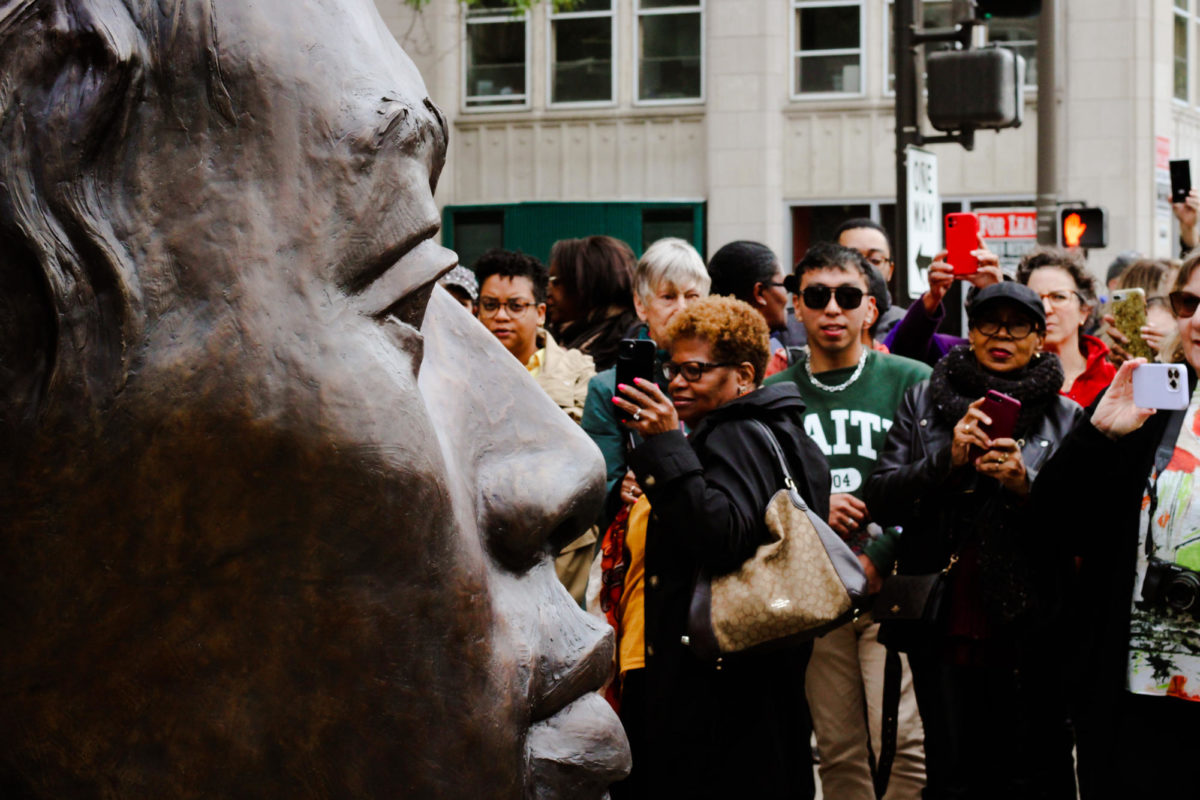Sunday afternoon, a crowd gathered in front of the Evanston Public Library as an eight-foot tall, 2,000 pound copper statue was unveiled, commemorating Jean Baptiste Point DuSable, a Haitian-American Chicago figure.
The event began with a welcome from Evanston’s Cultural Arts Coordinator, Joyy Norris, who described DuSable and his attributes as the known founder of Chicago.
A Haitian-American trader and first non-indigenous settler of Chicago, DuSable became known for his immense contributions to what was a prosperous trading post. He was born to a French father and an enslaved African mother in Haiti. He found himself settling on the shores of Chicago after forming relationships with Native American communities in the Great Lakes region in the late 1870’s.
Nearly 50 attendees gathered to witness the unveiling of the sculpture and to speak on the deeper meaning of this monument. DuSable’s immense contributions to the growth of Chicago was the main topic of conversation. The importance of his representation as a commemorable Black figure was emphasized.

“Today in Evanston, a giant step has been taken to advance the cause of the full and unfettered recognition of Black historical figures in Chicagoland,” said President of the DuSable Heritage Association, Etzer Cantave.
The rediscovery of DuSable and his work has been foundational for many, especially those who grew up in the bubble that can be the North Shore.
“Both of my parents are from Haiti, it’s one of those legacies,” said David Le Roy, a son-in-law to the Evanston resident who commissioned the first bronze bust of DuSable. “I grew up in Wilmette so I’d never heard of DuSable, ever.”
Chicago, and as a result, Evanston, are generally considered diverse communities. Many associate that diversity with DuSable’s work.
“The diversity of our community is a reflection of the diversity that built our city two centuries ago,” said Cantave. “We can see by the presence of the community that there are a lot of Haitian Americans around, and we are all making our contributions one way or another, fully integrating in our community to make a difference.”
Mayor Daniel Biss, who was present at the ceremony, highlighted the importance of preserving Black history in our community and nation.

“When we see and hear Black stories and experiences, we learn instantly about the erasure of non-white people in our nation’s history,” said Biss. “This bust is an opportunity for us to reverse some of that, to create an object in town that we can use to educate ourselves and to spark conversation.”
Biss gave thanks to contributors who made this commission possible. In his address, he focused on the bust’s ability to remind people of an important historical figure for years to come.
Biss then passed the microphone to sculptor Erik Blome, the person who created the statue.
“The classic, copper statue was designed under a contemporary concept,” said Blome. “I didn’t want it to be a temporary medium, like an unsustainable foam, rubber or plastic, I wanted it to be something classic and permanent like all the other monuments. [But] it’s got a contemporary concept behind it because it’s hitting different communities. I wanted it to be explored, moved around.”
This bust is an exact replica of another one standing in downtown Chicago, except this one is larger in size, and made to move. Blome explained that the original bust, located above the Chicago River, was placed in a privileged spot. Although it was fulfilling the strive to represent Haitian culture, only a select group of people had access to it. This created a need for more diverse exposure and representation of the Hatian-American culture, and was what sparked the contemporary concept of the bust standing in different locations.

Gerald Daye, President of the Evanston Haitian Community Fest, discussed why Evanston was picked as the place to host the DuSable bust.
“Our country, your country, my country, now, there is a lot of [insensitivity] about how Blacks and whites are represented,” said Daye. “Evanston is the place for this representation because it will be appreciated and honored, and hopefully it will spark conversation of Haitian culture in the future.”
The bust is named ‘Explorer,’ and it was officially shown to the public upon the removal of a protective tarp.
This is just the beginning of Haitian-American representation in the region. The renaming of Lake Shore Drive to Jean-Baptiste Pointe DuSable Lake Shore Drive in 2021 took the DuSable recognition movement and his legacy to a new high.
“That was justice. We salute the valiant work of the Black Lives Matter movement in that endeavor,” said Cantave.
It was announced that two years from now, DuSable Park will stand at the forefront of Chicago’s lakefront.
“Chicago was born diverse,” said Cantave. “It is destined to be diverse.”















